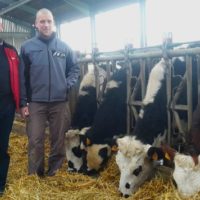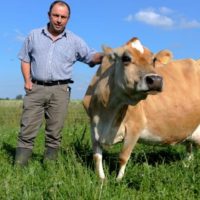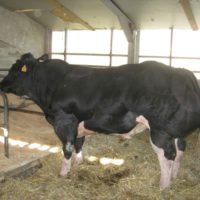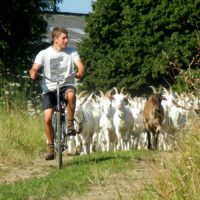Grazing management with sheep and grazing infrastructure
Practice abstract
Description
Sheep farming to be profitable requires a high productivity of ewes and labour (number of ewes / units of labour) but be careful about the costs of mechanization (number of tractors, hay making machines, etc.) that negatively impact income. In order to meet these objectives, one of the pathways developed is outdoor lambing to reduce the time spend inside and therefore the need for stored forage combined with excellent grazing management. An innovative fence system based on flexible-sized cells is used to meet the daily demand of sheep and save time during the shift of animals (rotational grazing). Indeed, the cells from 0.125 to 0.50 ha area accommodate up to 200 sheep. A corridor system where several batches of animals are grazing in several adjacent plots in a row facilitates the shift of animals because, by transferring a single wire, the farmer is able to move up to 6 lots, or 1200 sheep, in less than 10 minutes every other day. Thanks to springs set up on the fence that make it flexible and an adaptation of the quad for electric insulation using a plastic pipe and steel bars going under the bike, there is no need to stop to pass the electrical wires, the farmer can roll over and avoid long opening and closing processes.
Taking two rows of six cells each into consideration, three mobile water troughs are placed at the intersection of each four cells (2 x 2 cells). Six animal batches are moved from the first row of six cells into the next row of six cells after two days. The three water troughs are moved every four days to serve the next twelve cells in which the animal batches are going to move in.
Thanks to these investments, it can adapt pasture rest period to grass growth and animal needs, by varying rotation length from 15 to 120 days depending on the season, all it needs is adjust the size of cells and let the grass grow.
Abstract also available in:
Dutch | French | German | Italian | Polish | Swedish
Additional information
| Farming system | conventional farming |
|---|---|
| Main types of animal | meat sheep |
| Country | |
| Product type | Practice abstract |
| Language | |
| Main domain of innovation |




